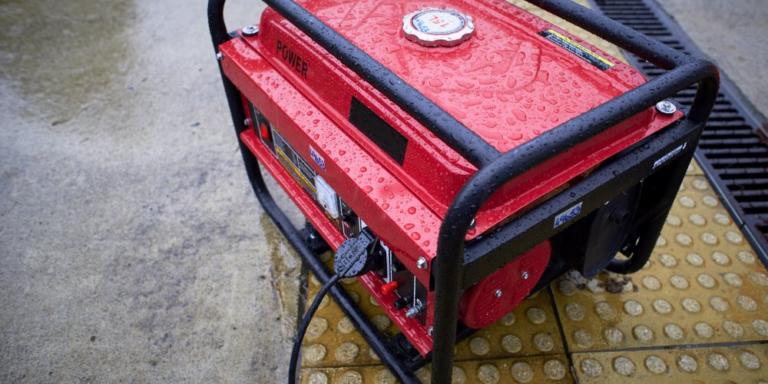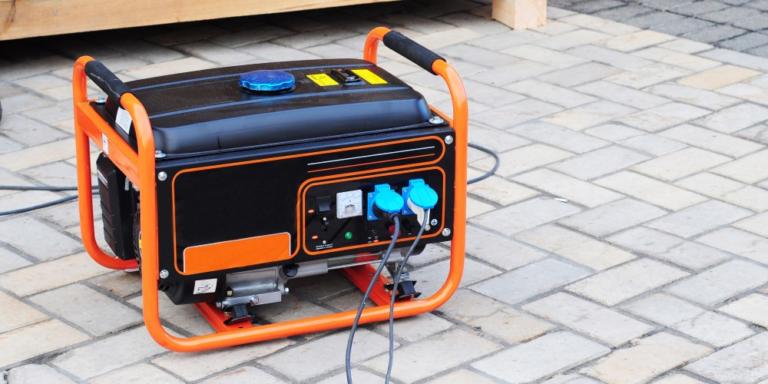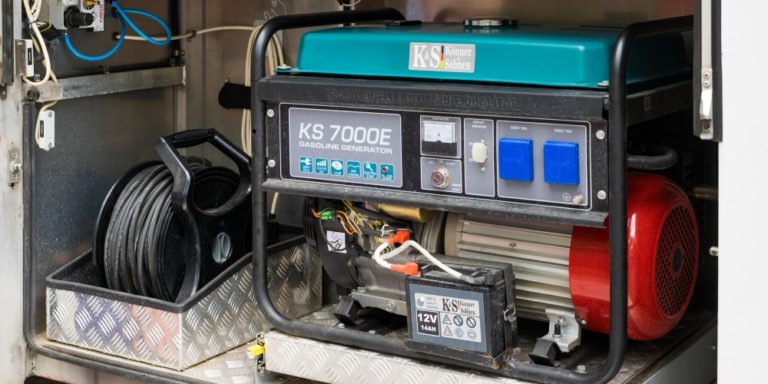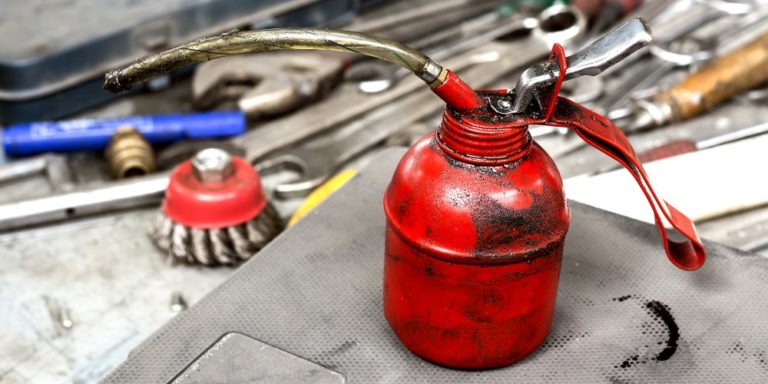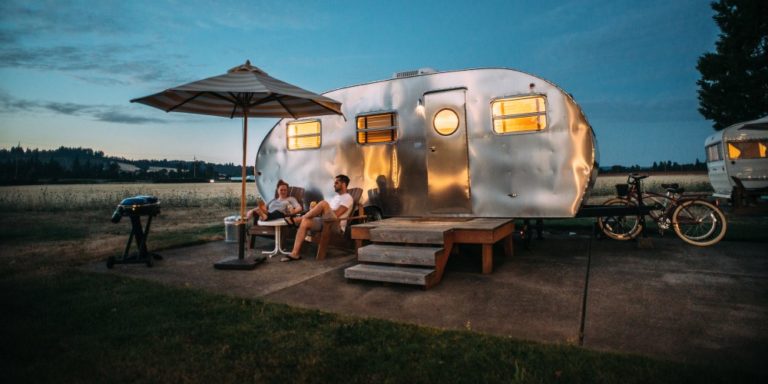Are you concerned about whether it’s safe to use your generator during rainy weather?
I have great news for you! Our team here at Generatorist has helped over 600,000 visitors find information about generators and we will help you as well.
In this article, we will discuss the dangers and risks of running a generator in wet conditions such as heavy rain or storms. We will also provide tips on how to protect your generator from moisture and ensure your own safety when using the device in bad weather.
Additionally, we will explain the role of the ground-fault circuit interrupter (GFCI) in protecting you from electrical shocks, as well as offer guidance on how to maintain and properly store your generator to prevent any damage.
Let’s begin.
THE KEY TAKEAWAY:
It is crucial to avoid running your portable generator in rainy or wet conditions without appropriate protection, such as a generator cover, steel enclosure, or pop-up canopy. Exposing the power outlets on your generator to water can lead to significant damage. Therefore, it is essential to keep water away from the control and connection panel at all times. Additionally, refrain from operating your generator on a wet surface to prevent any potential risks or damage.
When you find yourself without power in your home—whether it be due to a heavy storm, a tree falling on a power line, or any other cause—having a generator can be an absolute lifesaver.
If you don’t take proper precautions or act carelessly, though, using a generator can be dangerous.
For one thing, it’s very important that you don’t allow your generator to get wet while it’s running. A generator’s entire purpose is to create electricity, and water and electricity do not get along.
However, that doesn’t necessarily mean you can’t use the device when it’s raining out. Technically, you can, but only if you’re very careful and take certain safety measures.
The Dangers of Running a Generator in the Rain & Storms
When you’re running your generator, allowing it to get wet can be a major problem for several reasons. First and foremost, there’s the danger of suffering an electrical shock, which could cause serious injury or even death.
When water gets into the generator’s outlets and onto the electrical panel, it has the potential to electrocute anyone standing nearby.
The following are safety recommendations from the Occupational Safety and Health Administration (OSHA) fact sheet on safely running generators in the rain, aimed at protecting workers from potential hazards:
- Keep a generator dry; do not use it in the rain or wet conditions. If needed, protect a generator with a canopy. Never manipulate a generator’s electrical components if you are wet or standing in water.
- Do not use electrical equipment that has been submerged in water. Equipment must be thoroughly dried out and properly evaluated before using. Power off and do not use any electrical equipment that has strange odors or begins smoking.
Even accidentally touching the generator while your hands are wet could result in a major electrical shock. The secondary danger of using a generator in the rain is the potential to damage the device.
Even if you and your family avoid getting shocked by the wet generator, moisture making its way into the outlets can cause the device to short out and potentially cause significant damage.
As a result, you may end up having to pay for repairs or even a replacement generator. In some cases, your generator getting wet while it’s running may even cause damage to the appliances that the device is hooked up to.
It can also be dangerous to run a generator during heavy windstorms.
Although it may be tempting to get your home’s power back on immediately after it goes out, you should always wait for the storm outside to calm down a bit beforehand.
Heavy winds could potentially be powerful enough to sweep up the heavy generator, causing it to collide with you, a family member, or your home.
Plus, high-speed winds may also make it harder to keep the generator dry while it’s running.
Can a Portable or Inverter Generator Get Wet?

Portable generators are the most popular kind of generator for homeowners and outdoor enthusiasts, primarily due to their versatility, size, and affordability.
Just like standard generators, though, portable generators should be kept as dry as possible at all times.
When a portable generator is running in the rain, there will be potential for liquid to find its way into the outlets, and that can run the same risks as it would with other types of generators.
You could experience a severe electrical shock, and the generator could be damaged.
WHAT ABOUT INVERTER GENERATORS?
An inverter generator is a special type of generator that provides power by inverting electricity. Specifically, these generators work by converting AC electric current to DC electric current, then inverting it back to AC electric current.
This process results in a cleaner wave of energy than what you’d get from other kinds of generators. Inverter generators tend to be more efficient and compact than traditional units, but they’re typically more expensive as well.
Inverter generators are similar to traditional and portable generators in the sense that they should be kept away from water during operation.
These special models are not usually any more waterproof than other generators; if you want to keep yours in good shape and remain safe, you’ll need to keep it dry.
WHAT ABOUT WHOLE-HOUSE GENERATORS?
Whole house generators are designed to run in bad weather so you don’t have to worry about rain or snow. Unlike portable generators, they will withstand the harshest conditions.
Home generators are equipped with protective covers to ensure that intense wind, rain, or storms do not cause any trouble.
- Whole house generators are designed to withstand outdoor conditions, including exposure to rain and other weather elements.
- They are typically installed in a weatherproof enclosure or housing to protect them from moisture and environmental factors.
- Proper installation is crucial, including providing adequate ventilation to prevent condensation and positioning the generator above potential flood levels if in a flood-prone area.
- Regular maintenance is essential to prevent water damage, including inspecting and cleaning the generator enclosure, checking for leaks, and replacing worn or damaged components.
What Should You Do if a Generator Gets Wet?
Even if you go out of your way to keep your generator dry, there may be an unexpected circumstance or accident that allows it to get wet.
While this isn’t an ideal situation, there are steps you can take to correct it.
STEP 1 – SHUT OFF THE DEVICE
First and foremost, if moisture has gotten on the generator while it’s running, you need to shut off the device. However, when doing so, be extremely careful to avoid touching the generator with wet hands.
If possible, wearing insulated rubber gloves when working with electricity is always a wise choice. Don’t forget to unplug all cords from the outlets as well.
STEP 2 – DRY THE GENERATOR
Next, you’ll want to thoroughly dry the generator, and there are several ways you can do so. The easiest method is to use the hot air from a heater.
You may be tempted to use a heat gun, but that could melt the plastic on the generator, so a heater is a better choice. Another option is to dry off the generator with fans.
It may take a while, but you can speed up the process by using several fans simultaneously.
Alternatively, if you don’t mind waiting a while, you can allow the generator to dry out naturally by leaving it out in the sun. Of course, if you’re dealing with rainstorms, this won’t be a practical option.
STEP 3 – INSPECT THE GENERATOR
Look for any visible damage, such as frayed cords or water damage to the control panel or other electrical components.
Also, be aware of any signs of corrosion on the generator, such as rust on the metal parts or discoloration on the electrical components. Corrosion can weaken the generator and make it unsafe to use.
If you find any damage, do not use the generator and have it repaired by a qualified technician.
WHAT SHOULD YOU DO IF YOUR GENERATOR GETS DRENCHED IN WATER?
Now, if your generator gets drenched in water or completely submerged, you need to do more than dry it off. When that happens, you need to disassemble the generator entirely and inspect its many components.
Some parts will need to be dried out, whereas others may need to be repaired or replaced. If you like, you can hire local electricians to handle the job for you, but it’ll cost a fair bit of money.
In a worst-case scenario, a generator that has gotten soaked will be damaged beyond salvation, in which case the only viable option will be replacing it.
How to Run a Portable Generator in the Rain
Whether you’re using your portable generator to restore your home’s power or to provide some electricity during a camping trip, you may find yourself needing to run it while it’s raining.
Sometimes, these situations are simply unavoidable. Fortunately, there are ways you can protect your generator from the rain while keeping it up and running.
GENERATOR COVER
The easiest option is to invest in a quality generator cover. These covers are affordable and waterproof, they don’t hamper the device’s portability, and in some cases, they even promote the natural cooling of the equipment.
Typically, covers made from materials like tarpaulin, polyester, vinyl, and nylon are effective for protecting generators from the elements. Here are some of the best-selling generator covers on Amazon, check them out.
Generator covers vary quite a bit in price, and it’s definitely worth it to splurge for a high-quality product.
Some of the best-rated generator covers that you can buy on the market are:
- GenTent Generator Running Cover (1508+ Reviews)
- IGAN Generator Covers While Running (1426+ Reviews)
- Champion Storm Shield Severe Weather Generator Cover (982+ Reviews)
- WEN Universal Weatherproof Generator Cover (953+ Reviews)
POP-UP CANOPY
Another way to run your portable generator in the rain is to utilize a pop-up canopy. From our experience, GenTent offers great products that will help you protect your machine. Essentially, a pop-up canopy is a little portable tent that you can put up over your generator while it’s running.
The downside to these canopies is that they usually don’t offer much protection around the sides, leaving the generator vulnerable to blown-aside rain and wind.
Ideally, you should only rely on a pop-up canopy to keep your generator dry in cases of light rain with little or no wind.
STEEL ENCLOSURE
If you primarily use your portable generator at home, you may want to consider having a steel enclosure installed for it. These enclosures feature louvered openings to prevent the generator from overheating, but rain is kept out entirely.
You can run your generator from its enclosure while using an extension cord to connect it to whatever you’re powering. The company called ZombieBox offers portable soundproof & weatherproof enclosures, check out their product line.
That said, only certain types of generators will fit properly into a steel enclosure, and having one installed is pretty expensive. Here is an awesome guide on building you own generator enclosure, feel free to check it out.
Here are great DIY videos of weatherproof and soundproof generator sheds:
Where Should You Put a Generator to Protect It From Bad Weather?
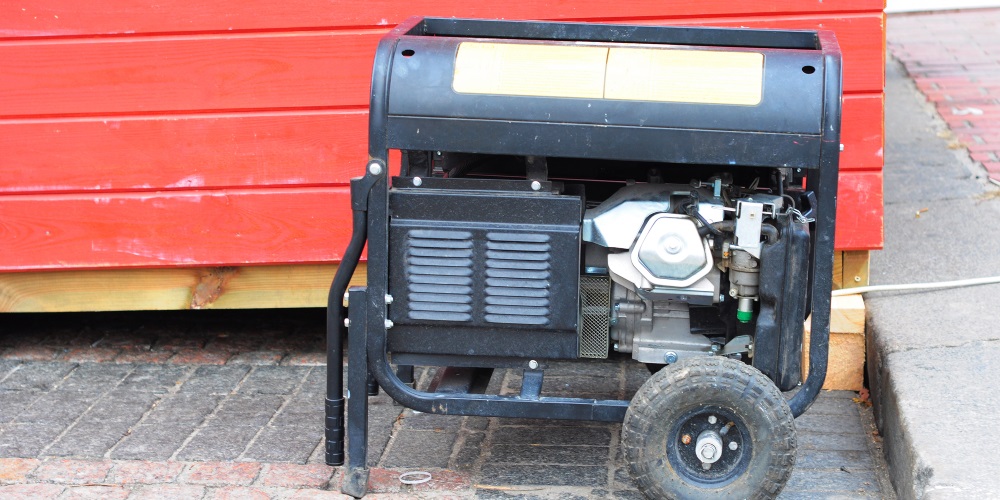
Even when you aren’t using your generator, it’s always a good idea to store it somewhere safe from the elements.
After all, you don’t want to discover that it’s damaged or soaking wet the next time you find yourself without power. There are several suitable options for storing your generator when it isn’t in use.
Places like your garage, shed, storage unit, and special generator enclosure should all be effective choices for keeping the device dry and in good condition, regardless of how harsh the weather outside becomes.
The best places to store your generator when not in use are:
- Garage – A garage offers optimal protection from bad weather and is readily accessible when you need it the most.
- Outdoor shed – This place is not ideal as it isn’t readily accessible when you compare it to a garage. Moreover, it doesn’t offer adequate protection from bad weather in winter conditions. Here are 17 free DIY generator shed plans that you can build yourself.
- Generator enclosure – A great option for those who are looking for something between an outdoor shed and a garage. It is well ventilated and protects your equipment from moisture, dust and dirt. Here is a great DIY guide for building your own enclosure.
Don’t forget to buy a weather-resistant cover to protect your unit from bad weather conditions.
Remember: you can store your generator in enclosed spaces when you aren’t using it, but you should never operate it in those areas. Read more about storing your generator in our comprehensive guide here.
Safety Tips for Using a Generator During Storms & Hurricane Season
If you have any way to avoid running your generator while a storm is raging outside, you should. However, if you’re truly in need of electricity, you should take as many safety precautions as possible throughout the process.
If you follow these tips, you’ll greatly increase your odds of avoiding injury and keeping your equipment healthy.
WEAR RUBBER GLOVES AND RUBBER-SOLED SHOES
The biggest danger of running a generator in the rain is the potential for electrocution, and you can reduce that risk significantly by wearing insulated rubber gloves and shoes with rubber soles.
Electricity will always flow through the path of least resistance, so you want to ensure that that isn’t your body!
ALWAYS SHELTER THE GENERATOR
Whether you go with a generator cover, pop-up canopy, steel enclosure, or your own DIY shelter, you should always keep your generator sheltered from the wind and rain while it’s running.
The shelter should not only protect the generator from above but also on all sides, and it must allow for sufficient airflow as well.
AVOID RUNNING THE GENERATOR IN AN ENCLOSED SPACE
To avoid the risk of carbon monoxide poisoning, you should never run your generator inside your home, garage, basement, crawlspace, or any other partially enclosed area.
From 2005 to 2017, in the United States, 1061 people died from the use of engine-driven tools and 880 of those deaths were caused by generators. It’s better to be safe than sorry!
STAY CLEAR OF THE GENERATOR
The closer you’re standing to your generator during a storm, the higher the risk of electrical shock. While the device is running, you should make a point to give it some space.
ONLY RUN THE GENERATOR AS NECESSARY
In some situations, you may not be able to avoid running your generator in adverse weather.
However, you should avoid running it any more than necessary. Whenever you’re using the generator during a storm or hurricane, you’re taking somewhat of a risk, and it’s always wise to keep that risk to a minimum.
For those running portable generators, the Louisiana State Fire Marshal’s office provides additional safety guidelines to ensure public safety:
- Do not place generators inside of any structure including garages, carports, and sheds, regardless of doors remaining open
- Instead, place the generator at least 20 feet away from your home, and your neighbor’s home, downwind away from open doors, windows, and vents
- Before refueling, turn the generator off and allow it to cool for 15-20 minutes
- Never try to power the house wiring by plugging the generator into a wall outlet
- Instead, use a heavy-duty, outdoor extension cord to plug appliances into generators
- Have a fire extinguisher nearby
- Have a carbon monoxide monitor for your home!
How GFCI Prevents You From Being Electrocuted
If your generator gets wet while running, the main thing protecting you from being electrocuted is the GFCI (ground-fault circuit interrupter). The GFCI is a fast-acting circuit breaker designed to shut off the generator’s electrical power in the event of a ground fault.
The Safe Electricity website by the Energy Education Council explains that a Ground Fault Circuit Interrupter (GFCI) functions in the following manner:
“The GFCI will “sense” the difference in the amount of electricity flowing into the circuit to that flowing out, even in amounts of current as small as 4 or 5 milliamps. The GFCI reacts quickly (less than one-tenth of a second) to trip or shut off the circuit.”
When water gets into a generator’s outlets, that can create a ground fault, but with a GFCI, the outlets have the ability to shut themselves off immediately.
While this doesn’t entirely remove the risk of using your generator in wet conditions, it does greatly reduce the odds that you or anyone in your family will get electrocuted.
The Bottom Line
When it comes down to it, running a generator in the rain is fine. However, if you’re going to do it, you need to be fully aware of the risks and take the proper steps to be as safe as possible.
Do whatever you can to keep the generator completely dry, keep a healthy distance whenever possible, and only use the device in bad weather when absolutely necessary.
There’s no reason to be scared of using your generator in the rain, but it’s important to have a healthy respect and awareness of the danger it presents.
As long as you’re careful, though, you’ll have nothing to worry about.
READ NEXT ON GENERATORIST:
- Choosing the Best Generator for Your Household
- What Size Generator Do I Need to Run a Refrigerator?
- Can a Generator Damage a Refrigerator? Safety Tips & More
- Best 2000 Watt Portable Generators
- Power Consumption of Household Appliances
- List of Electric Appliances & Their Wattage Usage
- What Can You Run on a 2000 Watt Generator?
- How to Easily Tune Up Your Generator
About Generatorist

Matthew Gerther
Founder, Generator enthusiast
Our aim here at the Generatorist is to become the No. 1 resource for all things related to generators & your power needs. We have helped over 600,000 visitors with our tips, articles and reviews and we will help you as well.
Our work has been featured in many publications around the world – Yahoo.com, Telegram.com, PaylessPower.com, PopSci.com, TopTenReviews.com, TechRepublic.com, iRV2.com, ThePrepared.com, Renogy.com or ADT Solar. Generators are our passion, and we strive to provide the most reliable & most comprehensive information out there.




